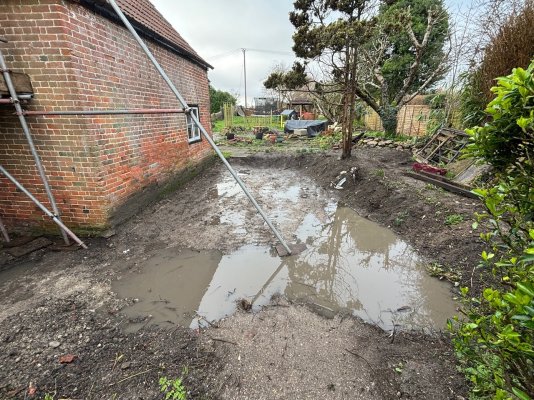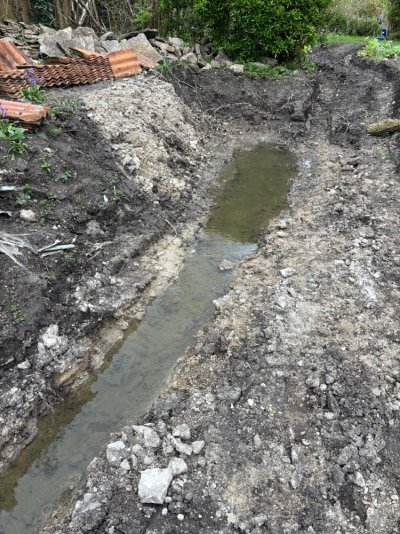Rutlandcottage
Member
- Messages
- 8
- Location
- Rutland
Hi all, I am seeking advice in a few areas for our limestone 18th century cottage.
1) Should we remove existing non lime plaster from damp impacted walls? Attached photos (With Red A on). We are planning in a few months time to replaster in lime, would stripping back in the meantime allow the wall to dry faster?
2) We seem to have a very shallow trench or splash strip around the house, what would be the best way to lower the external ground level in areas where it is higher than the internal level? A ZebColm trench? The external ground level is highest where the damp is most present although the most impacted area is mainly along the internal party with our neighbours property (Red A photos), and where issue 3 is below.
3) How do you identify if there is a soak away in place? Attached an image where a rear downpipe seems to just go straight into the soil. The wall has damp issues on the inside, but that’s been exasperated by vegetation which was growing against the wall which we’ve removed and a broken coping section on the roof that was allowing water in which we are having roofers work on at the moment. (blue B photos). Also any suggestions on what to do with this area? Replace the soil with gravel or a trench and lower?
At some point the whole house has been pointed in concrete externally which we’re planning to repoint in lime once we can afford it. We’re hoping that by doing the internal walls in lime and lowering the external ground level we can start to address the issues. We’re also planning to reopen a fireplace that has been completely bricked up and plastered over in the same room as the red A photos will help increase ventilation also.
Any questions please let me know or any other ideas are greatly appreciated!
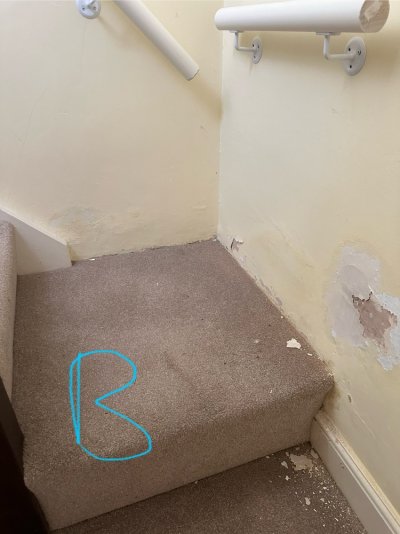
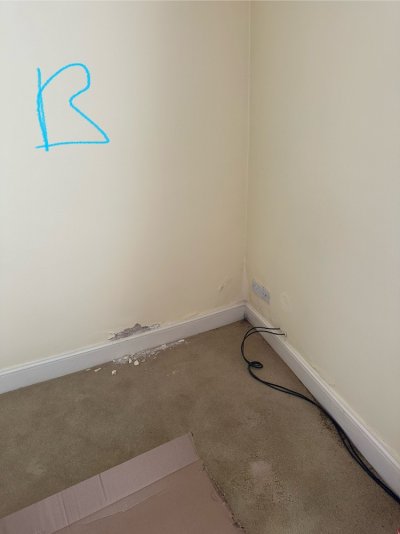
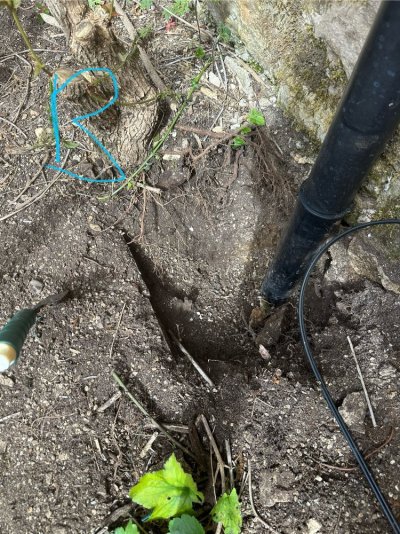
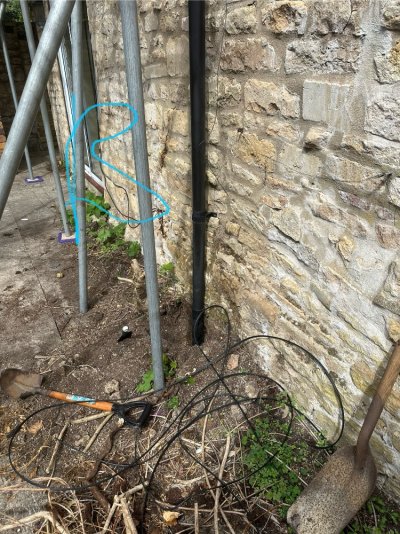
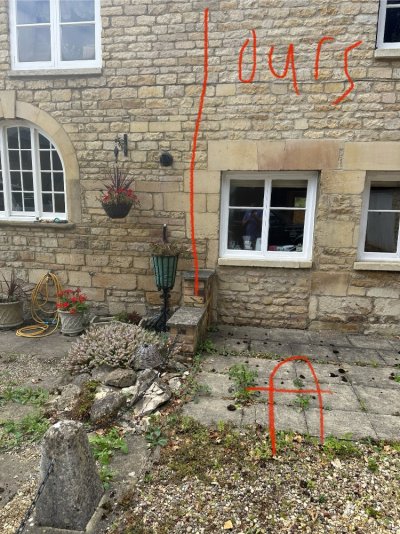
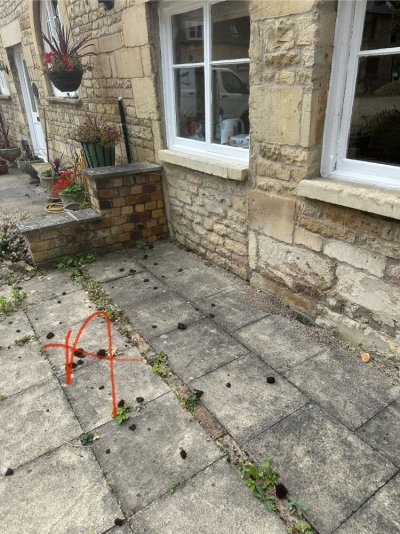
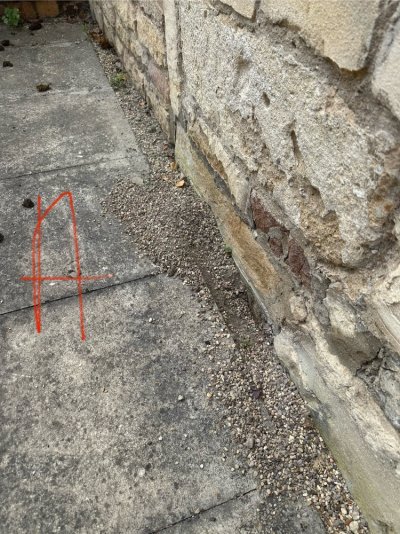
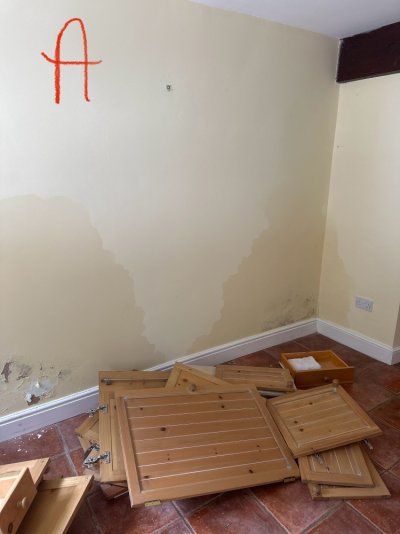
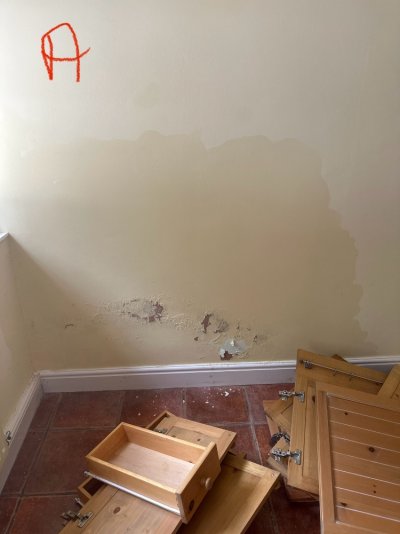
1) Should we remove existing non lime plaster from damp impacted walls? Attached photos (With Red A on). We are planning in a few months time to replaster in lime, would stripping back in the meantime allow the wall to dry faster?
2) We seem to have a very shallow trench or splash strip around the house, what would be the best way to lower the external ground level in areas where it is higher than the internal level? A ZebColm trench? The external ground level is highest where the damp is most present although the most impacted area is mainly along the internal party with our neighbours property (Red A photos), and where issue 3 is below.
3) How do you identify if there is a soak away in place? Attached an image where a rear downpipe seems to just go straight into the soil. The wall has damp issues on the inside, but that’s been exasperated by vegetation which was growing against the wall which we’ve removed and a broken coping section on the roof that was allowing water in which we are having roofers work on at the moment. (blue B photos). Also any suggestions on what to do with this area? Replace the soil with gravel or a trench and lower?
At some point the whole house has been pointed in concrete externally which we’re planning to repoint in lime once we can afford it. We’re hoping that by doing the internal walls in lime and lowering the external ground level we can start to address the issues. We’re also planning to reopen a fireplace that has been completely bricked up and plastered over in the same room as the red A photos will help increase ventilation also.
Any questions please let me know or any other ideas are greatly appreciated!










